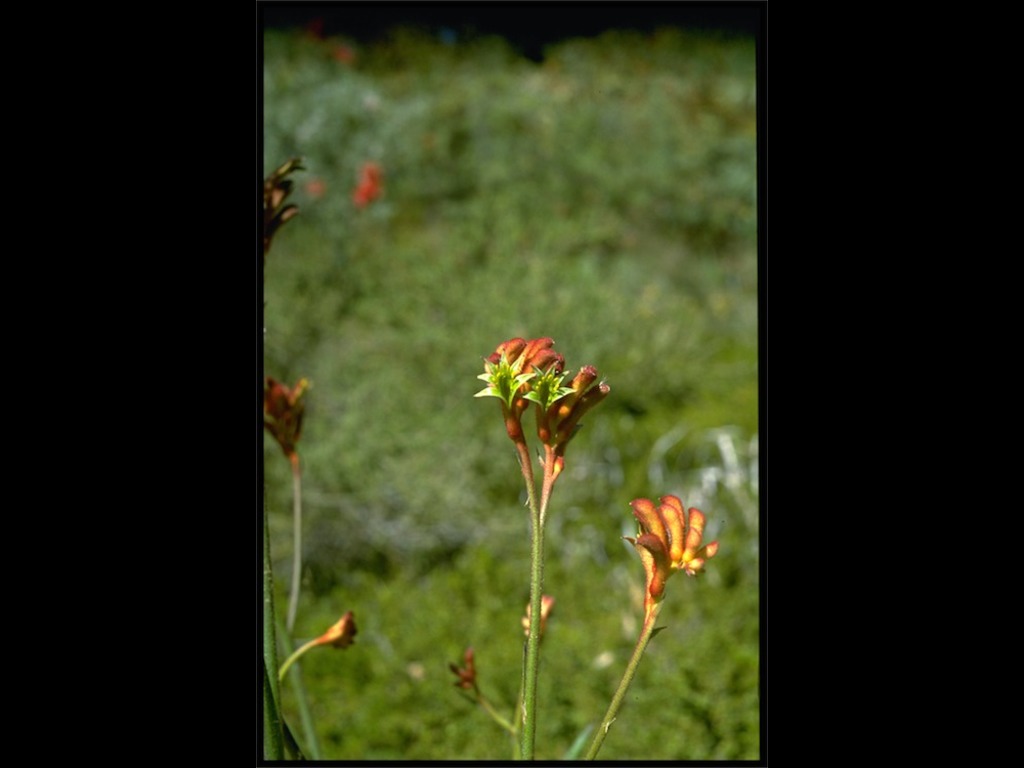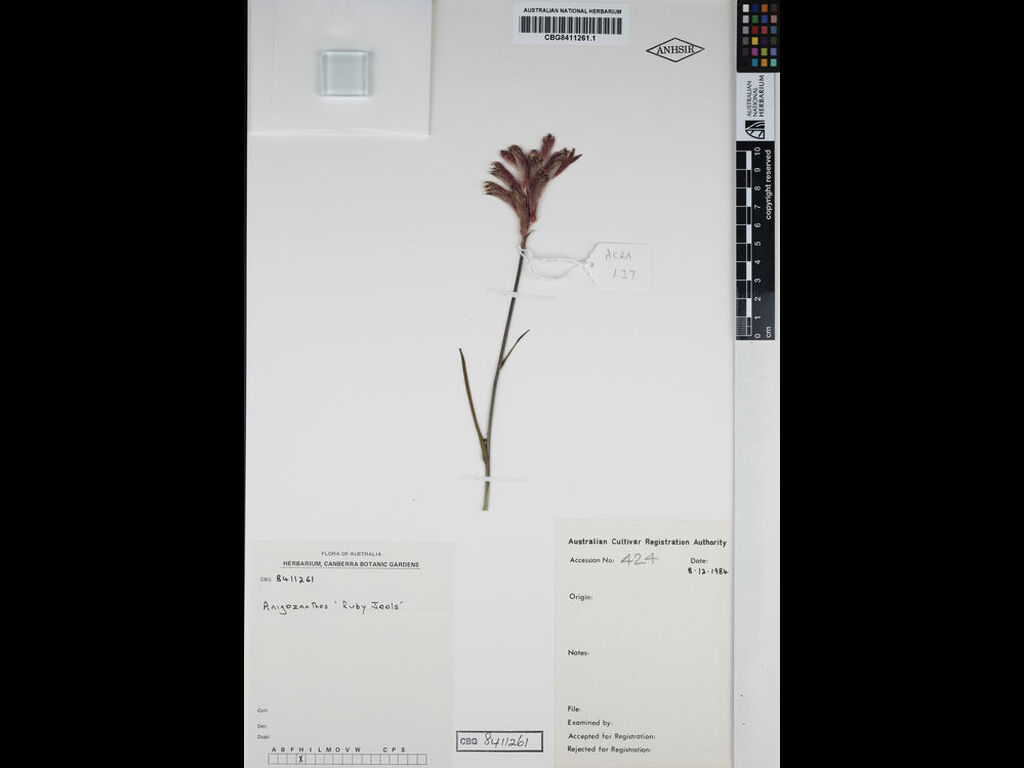Anigozanthos 'Ruby Jools'
- File Number
- 424
- ACRA Field Book Number
- 137
- Registration Date
- 14/05/1990
- Application Received
- 01/07/1987
- Family
- Haemodoraceae
- Cultivar Name
- Anigozanthos 'Ruby Jools'
- Origin
- Anigozanthos 'Ruby Jools' arose in the nursery at the Perth Zoo in 1972. It was selected by I R Dixon of Kings Park and Botanic Garden. The name refers to the colour of the small flowers. The cultivar is a hybrid plant from A. humilis and A. flavidus. The cultivar was first received by the Authority in July 1987. Registration applied for by Mr J Hickman of Perth, Western Australia.
- Characteristics
- The flower stems are up to 60cm high when grown in containers, and possibly a little larger when grown in the open ground. The colour of the hairs is uniform on the flower from the ovary to the end of the floral tube. Perianth tubes are 3cm long, lobes are reflexed and split into 6 segments. The split on the underside of the tube is almost 2cm long or approximately 2/3 the length of the tube. The branching inflorescence normally carries 3 main branches with most dividing again into two. Each of these smaller branches carries ca. 17 flowers arranged in a similar fashion to A. humilis. The filaments are 3mm long and the anthers are 2mm with a yellowish appearance. The anthers are arranged in a semi circle. The leaves are 250mm long and 10-12 wide and tend to be semi-evergreen. Diagnosis: This cultivar differs from A. humilis by being much taller, with semi-evergreen and larger leaves, similar to A flavidus. The flowers are on a branched inflorescence, whereas A. humilis is rarely branched. The perianth tube is not so deeply cut on the underside, whereas it is almost entirely so on A. humilis. Anthers are arranged in a semi-circle, not in distinct pairs as in A. humilis. The lobes are more reflexed and the flowers are smaller (though A. humilis subsp chrysanthus can be as small. The cultivar differs from A. flavidus by being much smaller and less branching but with more upright branches. The anthers are yellow and not orange as in A. flavidus. The split on the underside of the perianth tube is much longer than in A. flavidus and the leaves are narrower and shorter.
- Cultivation
- This cultivar has been in cultivation for 15 years and is less susceptible than A. humilis to slugs, snails, rust and ink disease. The flowering season is from late August to October in Western Australia. Plants must be propagated by vegetative means or tissue culture to preserve the cultivar form.
- Publication
- Australian Cultivar Registration Authority (1993), Australian Plant Cultivars. Australian Plants 17(134): 53
- Colour Coding
- RHS Colour Chart 1966 Flowers: hairs on perianth: red group 45B, perianth colour: green group 139C, anthers: yellow orange group 14B
- Propagation
- Division or tissue culture
- Applicant Name
- J. Hickman
- Uses
- As part of a mass planting or mixed in a shrubbery, or as a spectacular feature plant. Attracts nectar feeding birds.
- Availability
- Unknown
- ANBG Accession Numbers
- ACC424, ACRA137, CBG8411261
- NSL ID
- -

